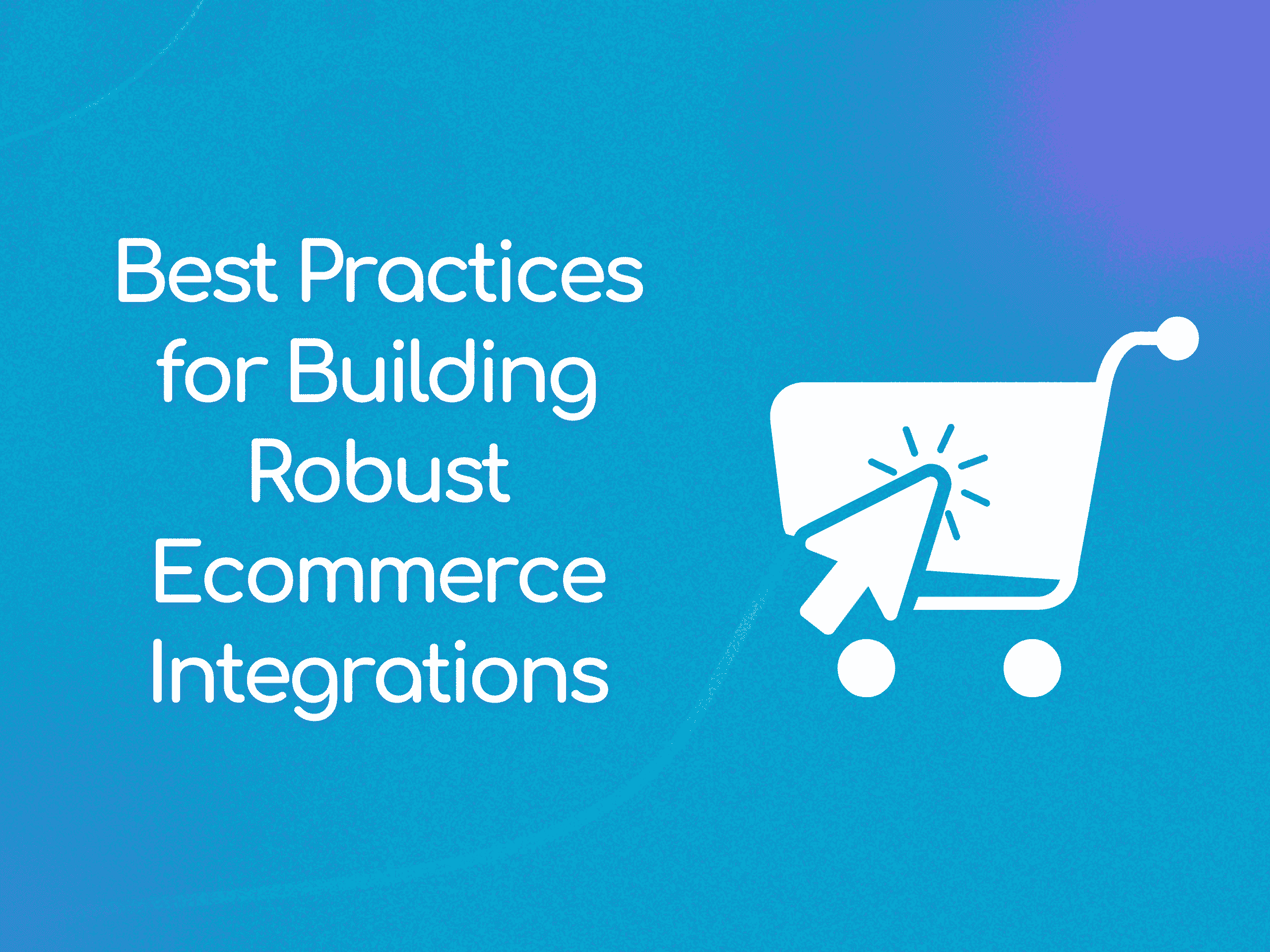Best Practices for Building Robust Ecommerce Integrations

For Ecommerce companies, integrating your platform with other business systems isn’t a nicety—it's a necessity. Ecommerce relies on the seamless flow of data across web and mobile sites, inventory systems, marketing and customer management systems and 3PL providers, just to name a few. However, these integrations come with their own set of challenges. At Pandium, we've helped numerous ecommerce providers build robust integrations that scale with ease. In this post, we'll dive into the essential considerations, common pitfalls, and best practices for creating seamless ecommerce integrations that drive efficiency and growth.
The Complexity of Ecommerce Integrations
Ecommerce integrations are often far more than simple data syncs between systems. They involve complex workflows that must handle high transaction volumes, real-time inventory updates, and seamless customer experiences across multiple touchpoints. Poorly implemented integrations can lead to lost sales, inventory discrepancies, and damaged customer relationships.
Unique Challenges in Ecommerce
- High-Traffic Events: Ecommerce platforms face extreme traffic spikes during sales events like Black Friday or product launches. Integrations must be able to scale rapidly to handle these surges without compromising performance.
- Real-Time Inventory Management: Accurate, up-to-the-minute inventory data is critical across all sales channels. Integrations need to ensure that inventory levels are synched in real-time to prevent overselling.
- Complex Order Fulfillment: Orders may involve multiple items, shipping methods, and fulfillment centers. Integrations must orchestrate this complexity seamlessly.
- Customer Data Management: Maintaining a unified view of customer data across ecommerce, CRM, and marketing platforms is essential for personalized experiences.
Addressing Common Issues with Ecommerce Integration
1. Inadequate Scalability
Many integrations fail to account for the explosive growth that successful ecommerce businesses can experience. An integration that works perfectly for 100 orders per day may crumble under the load of 10,000 orders during a flash sale. If traffic exceeds what an integration can handle, then you may find that data/orders are lost and a lengthy manual cleanup process needs to be implemented.
Best Practice: Design for scalability from the start. Some examples of things you can implement to cater for high-volumes are:
- Implement webhook bundling to prevent API overload.
- Setup automated alerting for traffic spikes so that issues can be addressed quickly.
- Setup monitoring to quickly identify failing requests.
- Ensure your integrations are hosted on cloud infrastructure that can auto-scale as needed.
Related Content: How to Write Dynamic Integrations to Handle Extreme Volumes
2. Not Synching Inventory Levels at the Right Time
Ecommerce integrations need to sync data regularly to avoid having out-of-date information showing to customers. Crons allow you to schedule tasks, such as syncing inventory levels between systems, at regular intervals. Running jobs frequently, like every few minutes, ensures that inventory levels are always current, which is beneficial during high-traffic periods or when stock levels change rapidly. However, this approach can lead to increased API usage, potentially causing performance issues if not managed properly. On the other hand, running jobs less often, such as hourly or daily, reduces API load but may result in temporary discrepancies between systems, leading to overselling or underselling.
Best practice: Find a balance based on business needs. For most ecommerce platforms, scheduling inventory updates every 15 to 30 minutes is optimal, as it maintains data freshness without overwhelming APIs. Additionally, implementing systems to detect significant inventory changes can trigger immediate updates outside of scheduled runs, ensuring real-time accuracy while minimizing unnecessary API calls.
3. Poor Error Handling and Recovery
Ecommerce is fast-paced, and errors in integrations can quickly snowball into major issues. Inadequate error handling can lead to lost orders or inventory discrepancies. Error handling issues can quickly escalate during high-volume periods, but can also cause issues at other times if there’s no systems in place to deal with them in an efficient way.
Best Practice: Implement comprehensive error logging, alerting, and automated recovery mechanisms. Design integrations to safely retry failed operations and re-run the integration so that data isn’t lost.
4. Inadequate configuration management
Ecommerce platforms often have to balance delivering customizable experiences, while keeping integrations scalable and maintainable. To ensure they can provide data required to enable excellent shopping experiences, integrations need to be configured in ways that meet user needs without overwhelming their development and product teams.
Best Practice: Understand your user needs, and if necessary, build integrations that cater to both plug-and-play requirements and more custom configurations.
Related content: The Role of Configurations in Scalable API Integration Design
5. Neglecting Auth Management
Implementing robust authentication management is crucial for ecommerce integrations to ensure secure and reliable data exchange between systems. Different APIs often have varying authentication requirements, which can be complex and frustrating to manage, as there is no universal standard like OAuth 2.0 for all systems. For instance, some APIs may require additional secrets or specific scopes to be included in authentication requests, making it challenging to handle these variations manually. Without proper authentication management, integrations may fail due to authentication errors, leading to data inconsistencies and operational disruptions.
Best Practice: Effective auth management involves securely storing and refreshing these secrets, ensuring they are available when integrations need to run. By handling authentication complexities in the background, ecommerce platforms can provide seamless integration experiences for their users while maintaining high security standards.
Related Content: API Authentication Methods
Establishing a Robust Integration Strategy
Watch this webinar with Gorgias, TripleWhale and Justuno to see how they create robust and scalable integration strategies.
Conclusion
Building robust ecommerce integrations requires a deep understanding of both the technical challenges and the unique demands of the ecommerce domain. By anticipating common issues and following best practices, developers can create integrations that not only withstand the pressures of high-traffic events but also provide the flexibility and reliability needed for long-term success.
From the Blog

Building Integrations at Early-Stage Startups
%20(1).avif)
